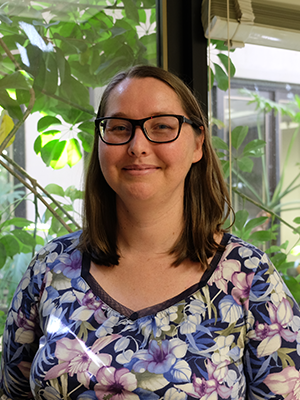A Higher Degree of Advising Support
F all Quarter is upon us, and thousands of students are back on campus. Sure, they’re focused on the day-to-day – papers due, lab assignments, what’s for lunch. But they’re also looking down the road to their expected graduation. Right now they can only get a rudimentary view of what that road will be like. Can we leverage technology to provide a pathway with multiple options?
all Quarter is upon us, and thousands of students are back on campus. Sure, they’re focused on the day-to-day – papers due, lab assignments, what’s for lunch. But they’re also looking down the road to their expected graduation. Right now they can only get a rudimentary view of what that road will be like. Can we leverage technology to provide a pathway with multiple options?
DARS: A Current System That Just Doesn’t Add Up
As director of instructional support for the Department of Mathematics, I spend part of my time advising students as they navigate our majors. To plan and gauge progress, we use the Degree Audit Reporting System — DARS for short.
DARS is a vended, but heavily customized, application that ismore than 20 years old. Over time, various patches, quick fixes and customizations have been added to keep it running and meet evolving needs. Most of the time we're slapping on band aids, and not performing the much needed “surgery.”
Needless to say, the university has concluded that DARS has reached the end of its usable life. First and foremost, it only provides a static picture of a student’s progress. Updates are fed in at regular and irregular intervals, and if a student has dropped or completed a class in the meantime, that won’t be reflected.
Additionally, DARS isn't great at helping students plan into the future. If students want to see what it would be like to change majors or attend summer school, they need to grab the general catalog and manually piece together a new pathway.
At a department level, DARS can be full of glitches and course miscounts for various degree programs. It often isn’t compatible with the unique ways some departments encode their requirements. Also, DARS doesn’t update all students at the same time. For example, if I run a batch to look at 30 degree reports all at once, some will be current as of yesterday, but some could be a month old.
uAchieve: Charting a Better Course
The new application we’re preparing to implement is called uAchieve. It is a feature-rich application used by many universities nationwide. It will help me be more effective in my advising role. More importantly, it will help students better plan their futures.
uAchieve comes with substantial benefits for students. Two stand out: at the push of a button, it provides a dynamic, up-to-the-minute degree progress report, and it will eventually allow students to input “if/then” scenarios.
A detailed and updated progress report will be very helpful. uAchieve can be updated at will as events happen. When classes are added or dropped or when grades are entered, the changes can be reflected immediately as students will now have the ability to refresh their own degree audits. In turn, the outstanding requirements toward the degree will already be updated.
Additionally, students will be able to use uAchieve to more precisely plan their futures. They will be able to enter scenarios—attend summer school, take a specific class, change majors—and see how that affects their requirements.
After a long and sometimes challenging rollout, uAchieve will also bear administrative fruit. It’s no secret that UC San Diego is unique with the six colleges system—all with specific general education requirements and programs. After hundreds of hours of work from the encoding team, uAchieve has been programmed to account for that.
Additionally, through periodic updates, we will continually be using the latest version of the software. uAchieve product managers are following a specific roadmap based on vast experience across many, many universities.
Nearing the Apex
We’re in the home stretch of campuswide deployment of uAchieve, which we expect to be completed in January 2019. Out of 1000s of degrees, minors, concentrations, etc., only a dozen or so are left to be encoded. For the past four academic quarters, our department has been using uAchieve for graduating students. We’ve been on the front lines testing, troubleshooting and sharing feedback with the encoders and project leaders.
All in all, it will take two to three years to fully implement all of uAchieve’s features. Once there however, we will have options that we’ve never had before.